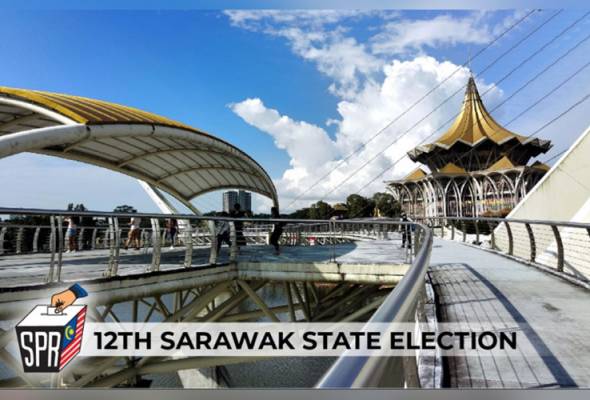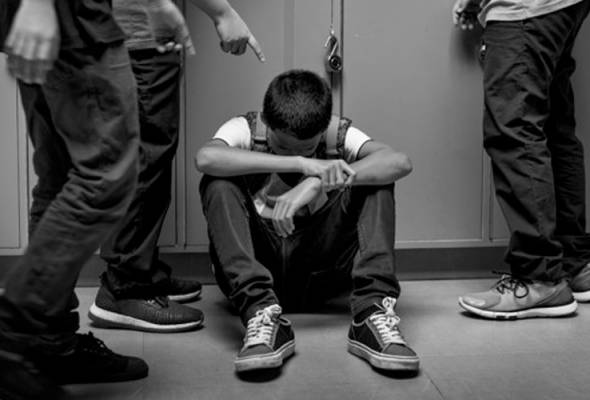
Published in Astro Awani & SARAWAKVOICE, image by Astro Awani.
In an earlier EMIR Research article titled, “Bread and butter issues remain the central concern of Sarawakians” (Malay Mail, December 13, 2021), it was stated that the voter turnout might be lower than 65% compared to the Sabah state election (2020) and Melaka state election (2021). However, there is an increasing fear that the voter turnout for the 12th Sarawak state election would be even lower – at least below 60% due to travel and logistical complications arising from the Covid-19 pandemic and expensive airfares.
If we do a simple calculation, the Sarawak state election could see less than 0.75 million out of 1.25 million Sarawakians coming out to vote on Saturday (December 18).
Although Sarawakians need not apply for EnterSarawak when they enter from other states, they still have to fill in the e-Health Declaration Form 12 hours before arrival and have to be fully vaccinated.
To avoid the travel hassles, many Sarawakians based in the Peninsula chose not to return home to perform their civic duty. The expensive airfare outweigh any sense of political obligations, concerns or anger/frustration in the form of voting.
According to Tuaran Member of Parliament (MP) Datuk Seri Panglima Wilfred Madius Tangau, an outgoing flight from Kuala Lumpur on December 17 and a returning flight on December 19 will cost around RM1,200, the monthly minimum wage in Malaysia.
And if RM1,200 multiplies by 250,000 Sarawakians working in the Peninsula, that’s RM0.3 billion in total.
Aside from Sarawakians based in the Peninsula who would be unlikely to make logistical arrangements to return to Sarawak one week before Christmas, sources revealed that many Sarawakians do not want their elderly parents going out to vote to reduce the risk of contracting Covid-19.
Despite Parti Sarawak Bersatu (PSB) emerging as the serious challenger and rival that could give Gabungan Parti Sarawak (GPS) and Democratic Action Party (DAP) a run for their money, it has not generated much excitement and enthusiasm among Sarawakians.
Unlike the 11th Sarawak state election (2016) and 14th General Election (2018), the desire for change had dissipated either due to fatigue or disillusionment. Some Sarawakians felt that no matter which political party or candidate they will vote in this election, perennial issues associated with their constituencies like flooding, drainage blockages, traffic jams, water and electricity supply problems, etc. remain unresolved.
Like many Sabahans and Melakans, localised Sarawakians appear to be more concerned about bread-and-butter issues such as cost of living, employment and income over who will form the next state government.
Some Sarawakians are also disappointed over the “unkept promises” when Pakatan Harapan (PH) governed for 22 months. Till today, Sarawakians could not enjoy the 20% oil royalty, as promised during the last general election.
While the Election Commission (EC) allows candidates and campaigners to put up flags, banners and billboards during the campaign period, many Sarawakians seem to be more looking forward to school holidays as the Christmas season is approaching.
As the EC does not allow physical campaigning in 18 urban constituencies, candidates who contest for the first time will not be able to deliver their message on the ground effectively. They only could maximise the deployment of social media platforms like Facebook, Whatsapp, Twitter and TikTok to explain their constituency revival plans to voters.
Even though the EC allows ceramahs to be organised in 64 constituencies with limited internet connectivity during the campaign period, many candidates might still find it challenging to travel over the rough terrain within Sarawak – 90% the size of the Peninsula.
As a result, Covid-19 restrictions have resulted in some Sarawakians having no exposure to the various political parties’ promises or manifestos for this election. Unless the voters search the candidates’ profiles via social media proactively, they will not have a clear picture of what candidates aim to achieve for their constituencies if they win the election.
Therefore, it remains to be seen how the political parties and candidates engage their voters in the remaining days.
Approaching the second week of campaigning, we can see that GPS has adopted a new narrative by using “hornbill” as the new political coalition logo during this election – advocating local issues to fight for the rights of Sarawakians.
GPS is an all-Sarawak alliance that comprises four local political parties such as Parti Pesaka Bumiputera Bersatu (PBB), Parti Rakyat Sarawak (PRS), Sarawak United People’s Party (SUPP) and Progressive Democratic Party (PDP). All parties exited from Barisan Nasional (BN)’s umbrella after the 14th General Election.
In contrast, DAP, Parti Keadilan Rakyat (PKR) and Parti Amanah Negara (Amanah) are literally like outsiders or peninsula-based parties that still could not resonate and have little traction with many rural Sarawakians. Instead of applying PH’s coalition logo, DAP, PKR and Amanah choose to use respective party logos to contest.
Compared to PKR and Amanah, however, DAP is more visible, especially in the urban areas. DAP’s flags, banners and billboards are quite conspicuous in the cities and towns. However, Sarawakians might not accept DAP’s messaging due to its Peninsula-centric slant which includes references to Pas and Umno.
As GPS has a relatively more cohesive ideology and resilient political framework compared to PH, the “Sarawak First” slogan from GPS appears to be more convincing compared to “Berani Ubah (Dare to Change), Sarawak Forward” from DAP, for instance.
Hence, publicity tactics could be part of the factors influencing voters’ behaviour in Sarawak. Some Sarawakians might not choose to vote in the election because they cannot decide which party or candidate to support or that they have become disillusioned and given up altogether.
Although PSB aspires to be the alternative option for Sarawakians, it is still too early to tell whether the party could be the kingmaker for this election. Since PSB will contest alone without cooperating with PH Sarawak, the chance of toppling the GPS coalition diminishes.
GPS will contest all 82 state seats, followed by 73 from Parti Bumi Kenyalang (PBK), 70 from PSB, 28 from PKR, 26 from DAP, 15 from Sarawak People’s Aspiration Party (Aspirasi), 11 from Parti Bansa Dayak Sarawak Baru (PBDSB), 8 from Amanah, 5 from Parti Sedar Rakyat Sarawak (Sedar) and 1 from Pas.
There are also 30 candidates contesting as independents.
Moreover, the monsoon season could dampen voter turnout, especially in low-lying, flood-prone areas with heavy downpours on polling day. The residents based in these low-lying, flood-prone areas would rather stay at home to move electrical and home appliances to higher ground to avoid unexpected economic losses from the flooding.
Nevertheless, no matter how challenging it is to organise the Sarawak state election during pandemic and monsoon season, political parties and candidates are expected to unrelentingly motivate voters to come out to vote on Saturday (December 18).
Every vote counts!
Amanda Yeo is Research Analyst at EMIR Research, an independent think tank focused on strategic policy recommendations based on rigorous research.

